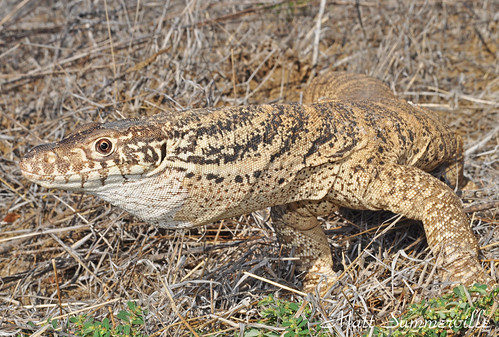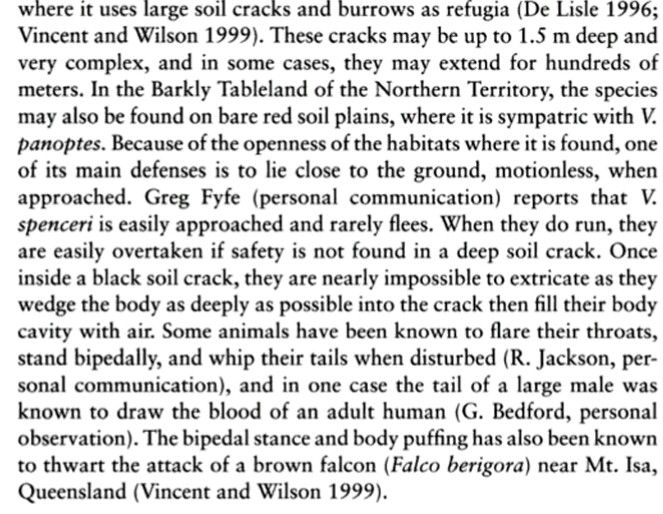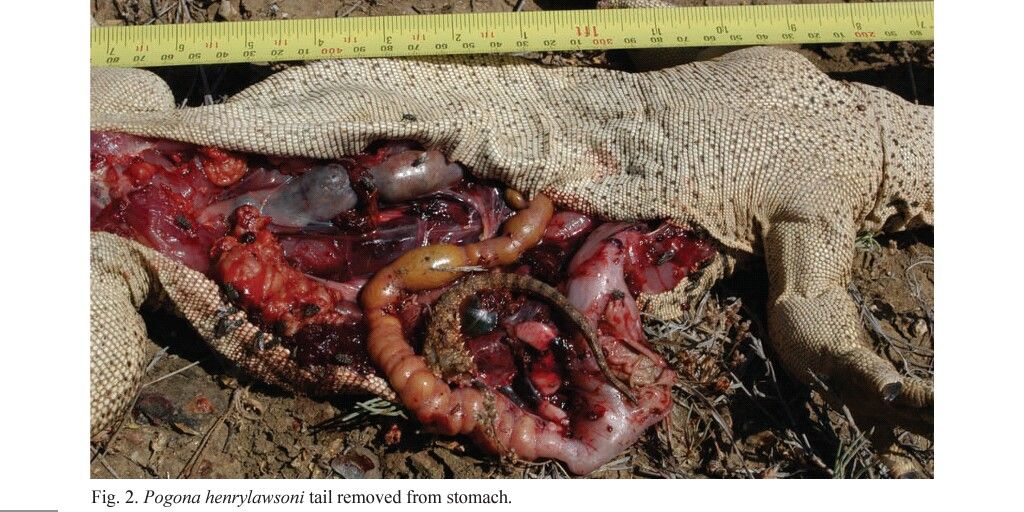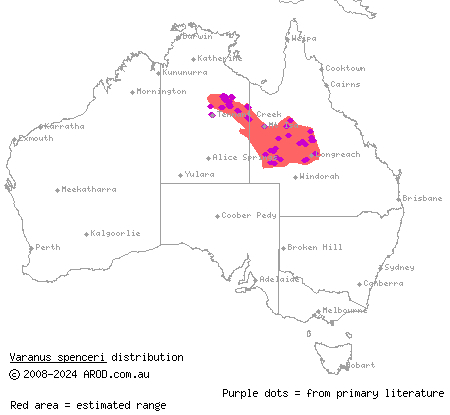Post by Ceratodromeus on Jan 9, 2016 10:43:52 GMT 5

Scientific classification
Kingdom: Animalia
Phylum: Chordata
Subphylum: Vertebrata
Class: Reptilia
Order: Squamata
Family: Varanidae
Genus: Varanus
Subgenus: (Varanus)
Species: V.spenceri
Description
This is one of Australia's largest varanid species, easily distinguishable from other species by the light body colorations. Most animals tend to have a light dorsal coloration with ocellated black speckling intermittently broken up by light colored banding. These bands (as well as coloration & patterning in general) vary in size between populations, for example, animals in the far west of the species' distribution tend to have broader bands then animals in the eastern portion of their range. The jaws have distinctive barring. Males are larger then females; the largest male recorded measured 1.35m(4.5ft), Though most adults measure about 1-1.1m(3.2-3.6ft) in total length{1}. The tail makes up to 50%of the monitors' total body length. Large animals can weigh up to 6kg(13.2lbs).
Behaviorally, it is similar to many other large varanid species, however instead of running when faced with a potential threat, this species is known to feign death; freezing in one spot with little to no movement. They will stay in this posture until the perceived threat is gone. Other defensive behaviors include the characteristic tail thrashing of Varanidae, elevated body posturing(which includes bipedal posturing), and hissing{1,2}.

Geographic range
Spencers' monitor is endemic to north eastern Australia, and like its alternative common name (the plains goanna) may suggest, this animal is known from areas with black soil plains. It is a heavily built animal meant for a terrestrial lifestyle, and is not to be found in high shrubbery. They are most active from August-October, and have been documented being relatively active at night -- a fact not too well documented for many monitor species.
Dietary habits
Like most other monitor species, the Plains goanna is a dietary generalist. Small mammals(rats), othropterans, snakes(such as elapids), lizards(Pogona), have all been found in the stomachs of the species. Examination of stomach contents have shown that small mammals, such as long haired rats, are a consistant, and probably important prey item in Australia's wet season{1,3,4}. This species has been described as a slow, methodical forager, but kills its prey in a manner akin to most other varanids.

Reproduction
Mating is figured to occur in August, with Oviposition occurring anywhere from October-November. Eggs are later near or around termite mounds in nests crafted by the females, often in burrows; The females lay their eggs at the ends of these burrows, which may extend up to 2m(6.5ft) and nearly a meter into the soil. Spencer's monitor lays te largest clutches, ranging from 11-35 eggs. After approximately 90days, hatchling emerge from the burrow. Neonates measure 19-22mm(0.7-0.8in)in snout-ventral length{1}.
References
{1}Pianka, Eric R., Dennis King, and Ruth Allen King. Varanoid lizards of the world. Indiana University Press, 2004.
{2}Shannon, R. "Observations on three species of Varanus in Ilfracombe, Queensland." Biawak 2.2 (2008): 80-86.
{3}Losos, JONATHAN B., and HARRY W. Greene. "Ecological and evolutionary implications of diet in monitor lizards." Biological Journal of the Linnean Society 35.4 (1988): 379-407.
{4}Way, Steve Irwin. "Stomach content note for a road-killed Varanus spenceri." Biawak 3.1 (2009)



